pectus excavatum baby causes
Pectus excavatum is due to too much growth of the connective tissue that joins the ribs to the breastbone. I was in junior high a time when your.
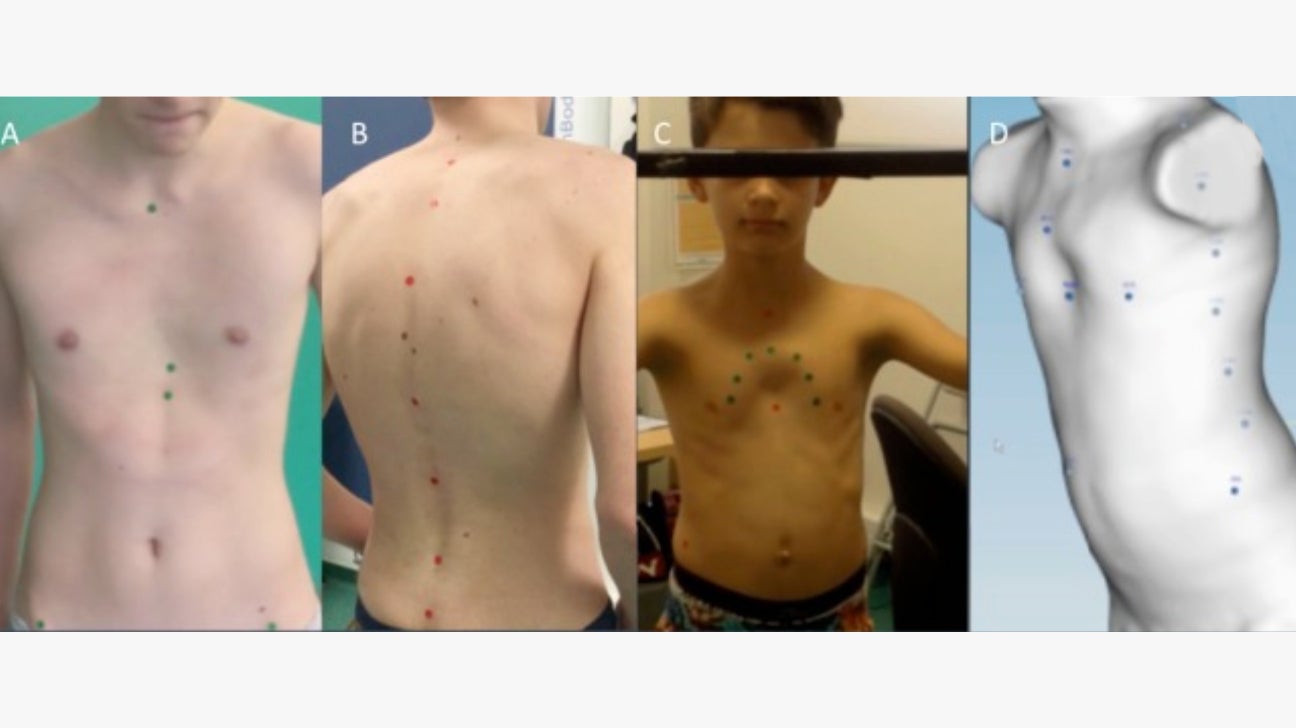
Pectus Excavatum Symptoms Treatments And Complications
Pectus Excavatum is the most common chest wall deformity seen in children.
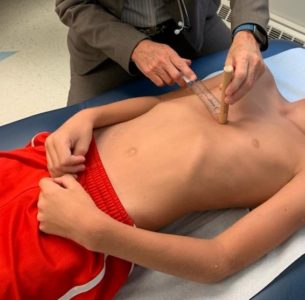
. I would describe pectus excavatum as a congenital chest wall anomaly that causes the sternum to be concave. Pectus excavatum also known as concave chest or funnel chest is a deformity of your childs chest wall. In 1594 Bauhinus wrote my father showed me a boy 7 years of age among the Nobles of Andalusia who was born with the sternum and ribs being bent back to the internal part of the chest and abdomen so that a large cavity appeared there.
Most common sign is slight indentation in the chestSymptoms that appear due to severe cases of pectus excavatum when the breast bone compresses the lungs or. It is caused when several ribs and the sternum grow abnormally which produces a caved-in or sunken appearance of the chest. It is a abnormality of the chest characterized by depression of the lower part of the sternum breastbone caused by an overgrowth of cartilage between the ribs and the sternum pushing inward.
It occurs mostly in boys and frequently more members in a family are affected. Pectus excavatum is caused by the abnormal growth in the chest of the connective tissues cartilage that attach the breastbone sternum to the ribs. This causes a depression in the chest that can range from mild to severe.
Pectus excavatum is an abnormal development of the rib cage in which the sternum breastbone grows inward resulting in a noticeable and sometimes severe indentation of the chest wall. With pectus excavatum the sternum goes inward to. At age 14 that he had the genetic condition known as pectus excavatum which causes the breastbone to sink into the chest sometimes dramatically.
The condition is not always noticeable at birth but is often apparent by the time a child is 2 to 3. PE is also called sunken chest or funnel chest. Both or just one side of the breastbone may be affected.
Pectus excavatum occurs in a baby who is developing in the womb. So you see a pectus excavatum get worse during the growth phase of a child. Pectus excavatum is a congenital deformity of the chest wall that causes several ribs and the breastbone sternum to grow in an inward direction.
Pectus excavatum affects about one in. The cartilage pushes the breastbone sternum inward. Pectus excavatum PE translated literally as hollowed chest and also referred to as sunken chest or funnel chest is the most common chest wall malformation seen in children.
It makes up most of the skeleton as a baby develops before it is. The first recorded description of pectus excavatum was in a 7 years old boy from Spain. Pectus excavatum is a condition in which instead of being level with the ribs the breastbone sternum is sunken so that the middle of the chest looks caved in.
Cartilage is a tough elastic fibrous tissue. What is pectus excavatum. Pectus excavatum is a relatively common congenital deformity a defect that is present at birth in which the chest appears sunken.
Pectus excavatum sometimes called cobblers chest sunken chest or funnel chest is the most common chest deformity affecting between 1 in 300 and 1 in 500 adolescents. The breastbone or sternum and some of the ribs grow abnormally causing a depression in the middle of the chest. The condition can be mild or severe.
The deformity can become more visible as your child grows up especially during puberty. The historical perspective. Pectus excavatum a deformity of the sternum and ribs caused by an unbalanced costochondral hypertrophy is a congenital abnormality with a prevalence of 1 per 1000 patients.
It is more common in boys than girls. While most patients do not have symptoms those with severe. Pectus excavatum is a condition in which it looks as if a childs breastbone sternum is caved in.
The condition is also called sunken. What is a pectus excavatum. The condition is sometimes called concave chest or funnel chest.
An overgrowth of the rib cartilages before and after birth causes the characteristic depression of the sternum breastbone. It can also develop in a baby after birth. The depression in the chest is due to abnormal growth of the cartilage that attaches the sternum to the ribs.
And its an abnormality of the costal cartilages not necessarily the sternum. This information from Great Ormond Street Hospital GOSH is about pectus excavatum also known as funnel chest. Commonly called funnel chest pectus excavatum is a depression caused when the sternum breastbone is abnormally pushed inward.
Patients can breathe better after having this corrected. Pectus excavatum PECK-tuss ex-kuh-VAW-tum is a condition that causes a childs chest to look sunken or caved in It happens because of a defect in the tough connective tissue cartilage that holds the bony part of the ribs to the breastbone. Causes of and Risk Factors Pectus excavatum is caused by an overgrowth of cartilage as the chest wall is developing before birth.
Also known as sunken chest or funnel chest pectus excavatum can be corrected with the minimally invasive surgical technique called the Nuss. Usually the ribs and sternum go outward at the front of the chest. 1 2 Pectus excavatum may be associated with connective tissue disorders such as Marfan and.
A child with pectus excavatum usually has a depression in the center of the chest over the breastbone which may appear quite deep. Because of the deep depression the lower ribs can stick out and give the appearance of a potbelly in.

Pectus Excavatum Edmonton Journal
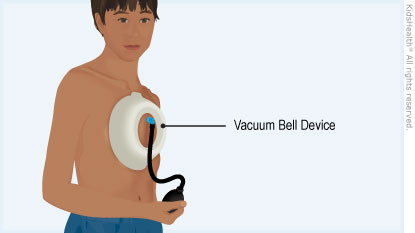
Kidshealth Pectus Excavatum Vacuum Bell Device Akron Children S Hospital

Full Shot And Limbs At The Age Of 9 Years A Evidence Of Pectus Download Scientific Diagram

Pectus Excavatum Symptoms Treatments And Complications

Pectus Excavatum Chest Wall Stanford Children S Health

Patient 2 Note Cafe Au Lait Spots Pectus Excavatum Widespaced Download Scientific Diagram
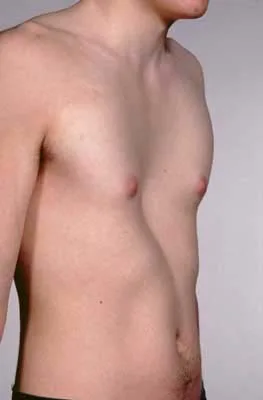
Pectus Excavatum Chest Wall Deformities Child Heart Specialist
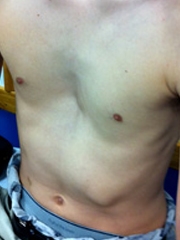
Pectus Excavatum Children S Hospital Of Philadelphia

Pectus Excavatum From A Pediatric Surgeon S Perspective Abstract Europe Pmc

Pectus Excavatum Funnel Chest Asthma Lung Uk
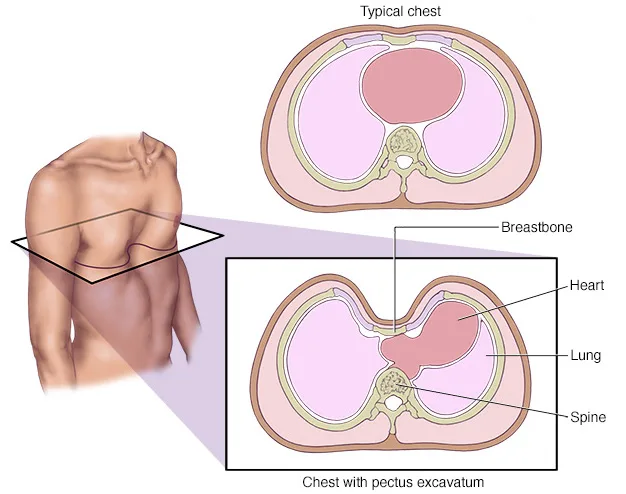
Pectus Excavatum Chest Wall Deformities Child Heart Specialist

Should I Worry If My Child S Chest Is Sunken Cincinnati Children S Blog

Pdf Prenatal Diagnosis Of Pectus Excavatum
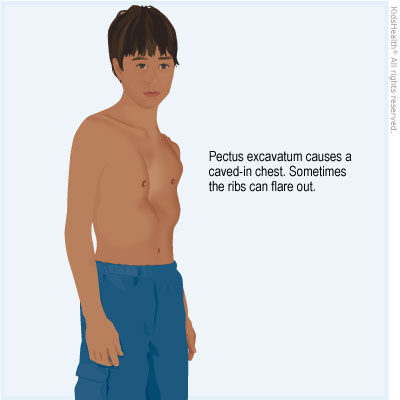
Chest Wall Disorder Pectus Excavatum For Parents Primary Children S Hospital

Pectus Excavatum And Improve Your Homoeopathic Knowledge Facebook

Strength Training With Pectus Excavatum Wasserman Strength
Hie Multimedia Pectus Excavatum
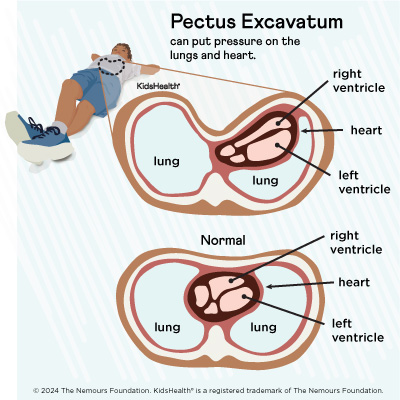
Chest Wall Disorder Pectus Excavatum For Parents Hackensackumc
